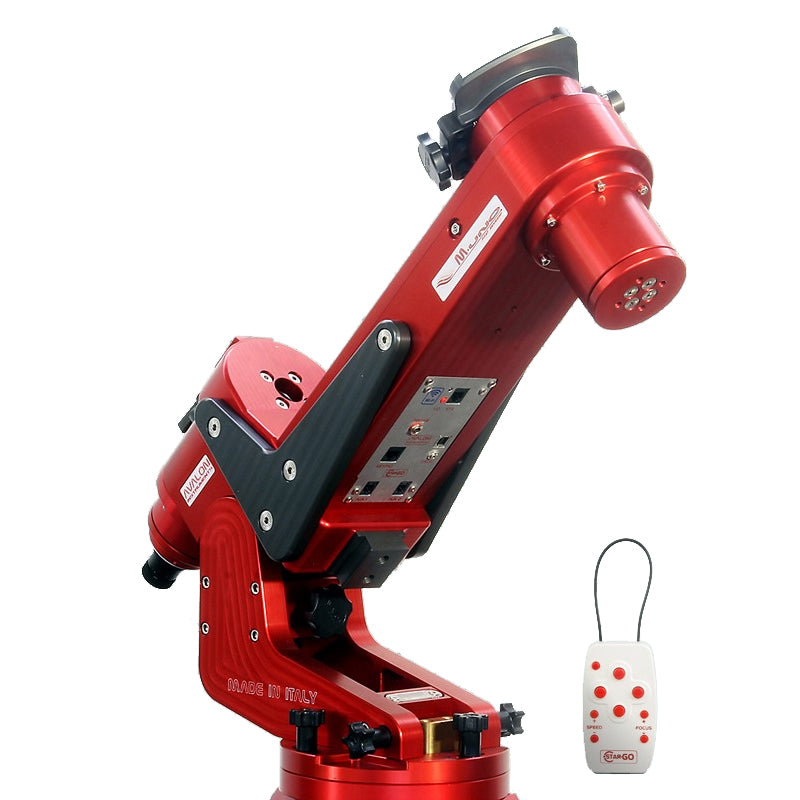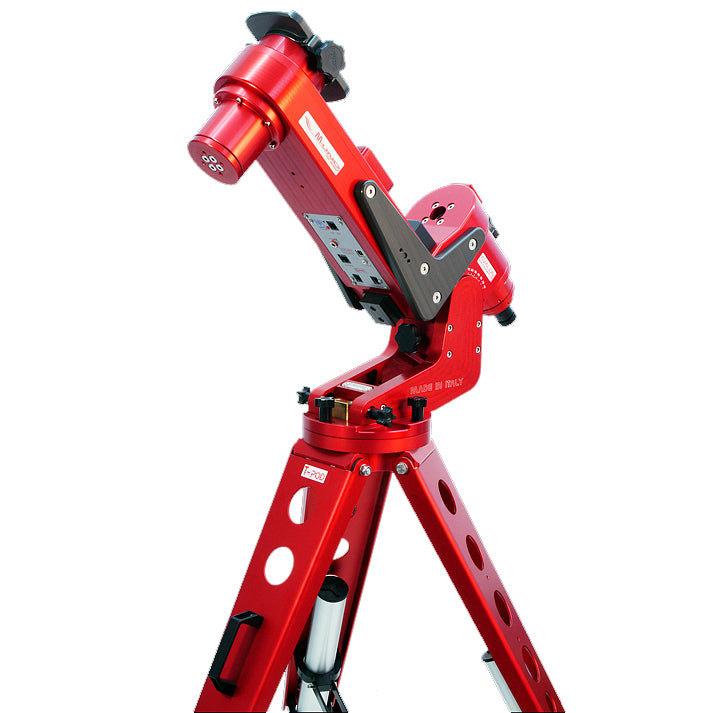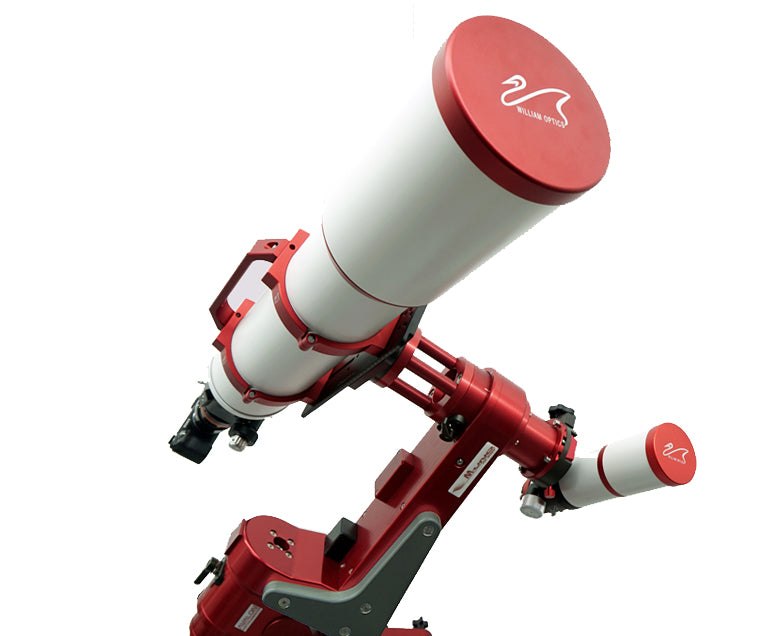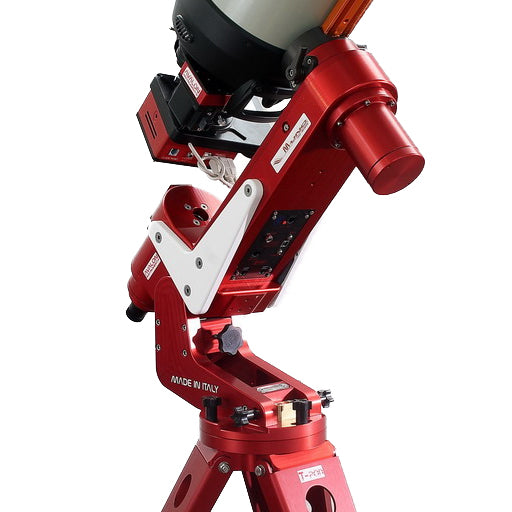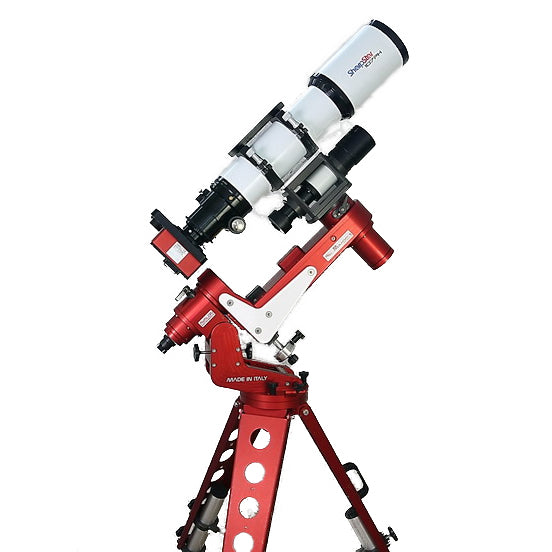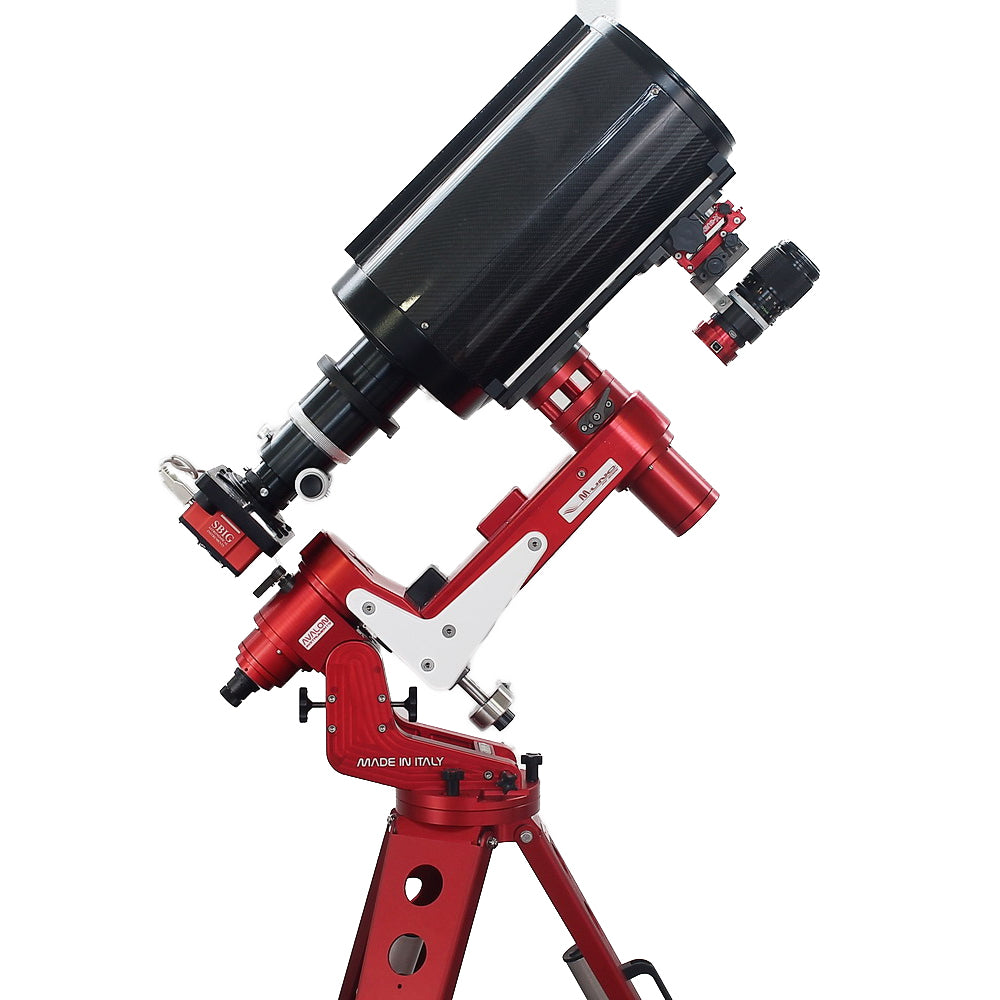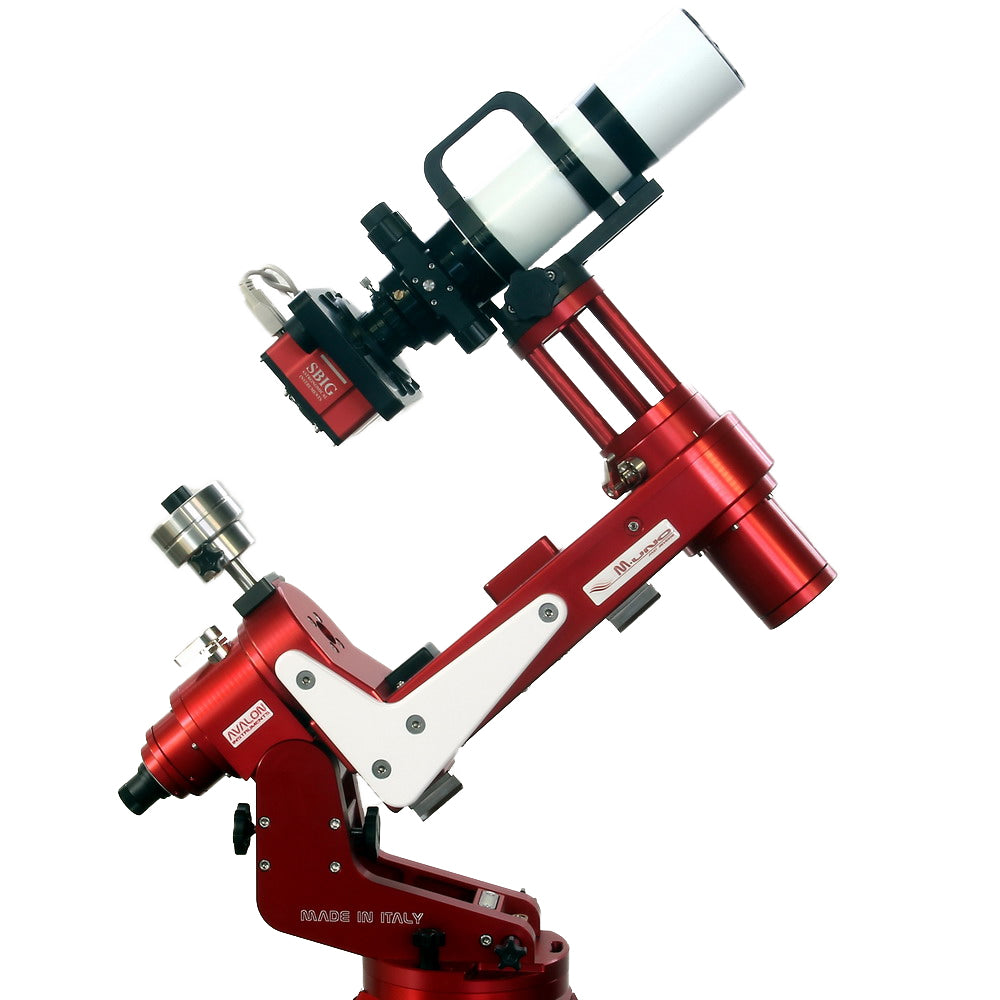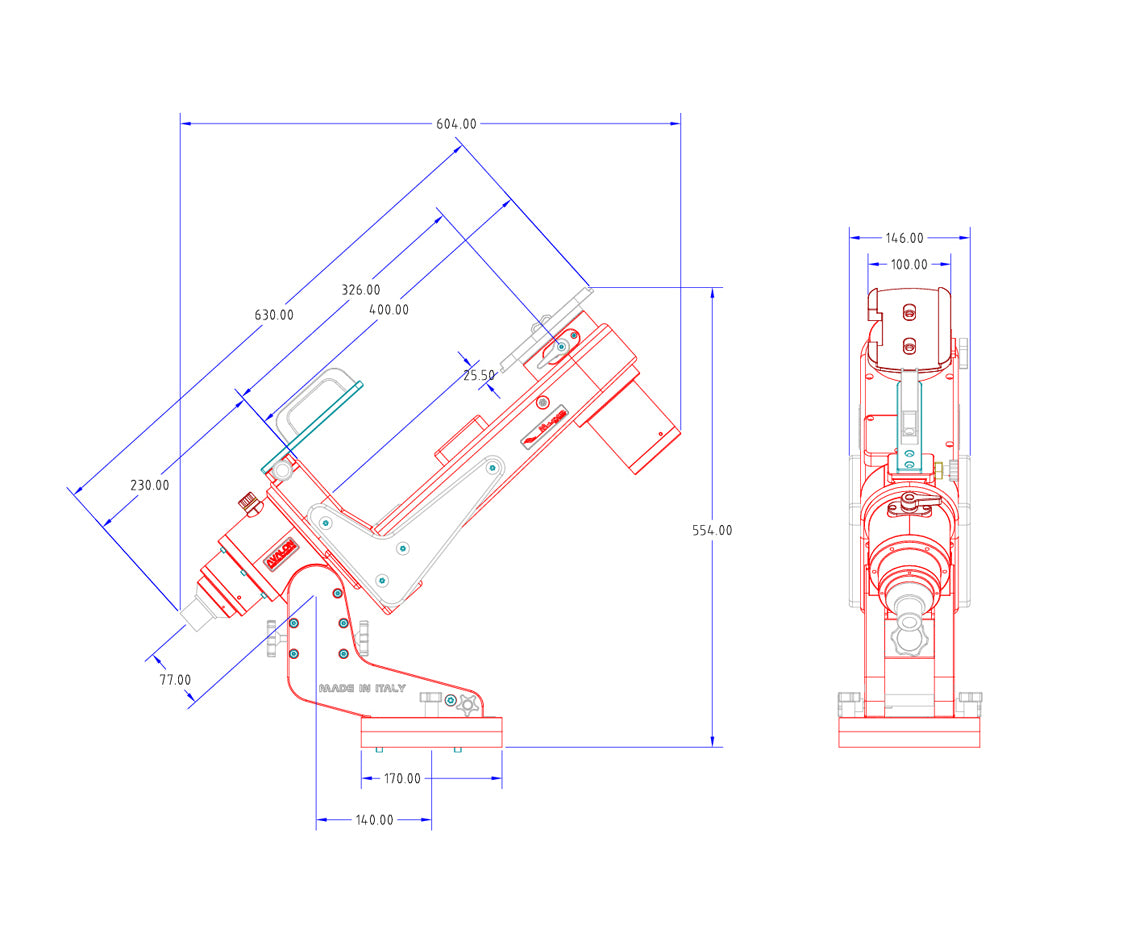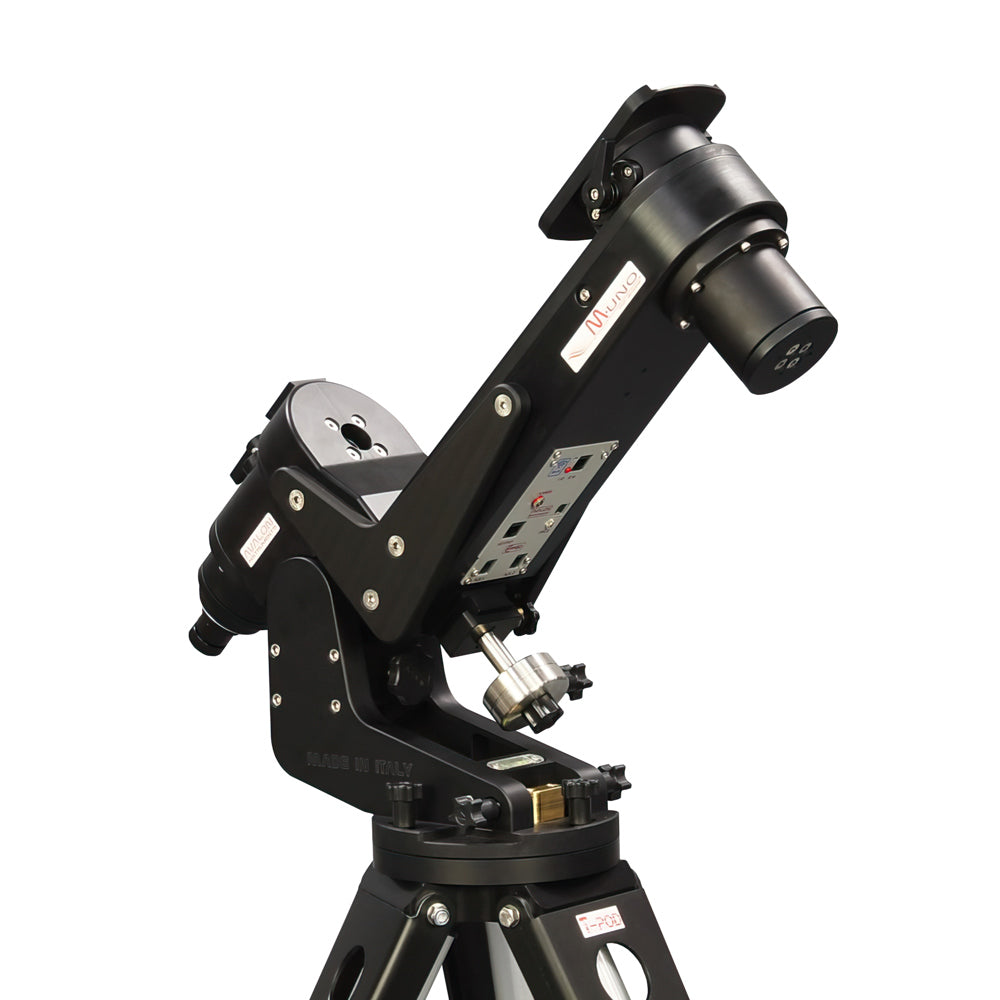AVALON M-UNO MOUNT
Avalon
Equatorial
Payload: 20 kg imaging, 25 kg visual
14.9 kg
AVALON M-UNO MOUNT - RED - Bluetooth is backordered and will ship as soon as it is back in stock.
Testar Australia is a technical assistant dealer for Avalon Instruments. Our staff has been trained at the Avalon Instruments factory to provide assistance, repairs and maintenance on their products.
The Avalon M-Uno mount is a portable single arm fork mount driven by the Fast Reverse Technology, a system of pulleys and toothed belts for high guiding accuracy and zero backlash. Available in either red or matte black.
Double Telescope Setup
With the Dual-DEC system, it is possible to install a second telescope on the opposite side of the declination axis or a guiding telescope. A vast range of accessories can be connected with the Dual-DEC system such as Vixen saddles, Losmandy Saddles or the X-Guider.
Meridian flip, something of the past.
As for the Linear, the motion transmission technology is based on pulley-tooth belt without play while its geometry makes the imaging easy at the meridian without having to wait for the object to cross the meridian. It works particularly well for objects such as the Andromeda Galaxy, M27 or M33 that reaches a maximum elevation of just a few degrees above the horizon, capturing that time is limited and it should not be wasted on the meridian flip routine.
The M-Uno is mainly designed for astrophotography with long focal length catadioptric tubes such as Schmidt-Cassegrain, Ritchey–Chrétien, Dall-Kirkham up to 10″ in aperture and 20 kg weight according to the tube length. It is possible to use the M-Uno with Newtonian optics (for example 8" f4) and even with short refractors (400-500 mm), with a piggyback or parallel guidescope.
To allow the use of refractors with length exceeding approximately 500 mm, there is a large variety of spacers that allow to distance the telescope from the mounting flange in order to allow the passage over the RA axis. With this configuration it could be necessary to perform the telescope inversion at the meridian passage in the case of the telescope striking the tripod. Although, in the majority of the configurations, the M-Uno can track an object from horizon to horizon without the need for the meridian flip, especially if the object is away from the celestial pole and the optical tube is short.
Counterweights goodbye
Why using counterweights if the mount itself can be a large counterweight? That is the concept behind the Avalon M-Uno mount: shift all the mount mechanism on the counterweight side and reduce the dead weight to be carried. The declination axis can be quickly balanced like in an equatorial mount, while for the RA axis there is a small 0.5kg counterweight that can be placed in 3 different positions. An extra counterweight may be needed if the telescope has to be raised with the Avalon spacers.
The M-Uno total weight is only 14.9 kg and it is provided with a detachable handle for easy transportation. With these features, in terms of lightness and transportability, the M-Uno ranks at the top of the lightest mounts with a capacity up to 20 kg. The total M-Uno weight is less than the LINEAR weight, which exceeds 20 kg considering counterweights and bar.
No gears for high guiding performance
This mount ranks in the medium-size mount range with a payload capacity of 20kg for astrophotography and 25kg for visual observations. Different from other mounts with a similar payload, the Avalon M-Uno has such a low guiding RMS error that it makes astrophotography possible with long focal length optics.
The majority of telescope mounts employ a worm drive gear system. This system however may produce a poor guiding performance due to mechanical errors in gears such as periodic error, rough gear surfaces and a play between gears (backlash).
- Periodic error: it is caused by the eccentricity of the worm gear in right ascension which has to turn constantly in order to compensate the Earth's rotation. While the guiding system tries to reduce the periodic error, it will never disappear completely due to its short period and its high amplitude. As a result, the tracking accuracy in right ascension will be always poorer than in declination. The Avalon fully belt driven system produces a periodic error with such a long period that your guiding system will always be capable to correct it and therefore delivering high performance guiging results.
- Gears roughness: gears are made of metal and while the grease reduces friction and wear, rough spots on the gear surfaces generate sudden tracking movements (spikes). When a guiding graph shows a sudden spike, your photo is most likely ruined or the stars in your photo will look ovalized. The effect is similar to wind gusts that do ruin your shots. Avalon does not use gears so the guiding performance is strikingly high!
- Backlash: in mounts driven by gears, backlash is caused by a gap between the gear teeth and it causes a play and consequently a delay in the guiding responsiveness. Some mounts allow a backlash compensation, producing a quick acceleration of the gears until the gear teeth touch and then transmit the rotation. However, the backlash varies along different points of the worm drive and generally also increases overtime. Avalon and its fast reverse technology produce an immediate guiding response as the system employs pulleys that do not suffer of backlash.
Pulleys and toothed belts, zero backlash!
This choice has allowed to obtain several advantages: a very steady motion without play (no backlash) or sudden peaks, which are factors of paramount relevance for long guided exposures and during high magnification visual observations. These features are of particular relevance especially for the declination axis motor which can now quickly reverse the motion without breaks to recover the plays: hence the mount name FAST REVERSE. The toothed belts used in the M-uno have the structure made of special material with steel strands to avoid any deformation, elongation and stress, much better than those used in the automotive engine distribution system (which are generally made of rubber with nylon strands). Comparing the service time for the automotive toothed belts, which is around 100.000 km, assuming a medium regime of 2.000 rpm and thermal stress from 0 to 90°C in a few minutes, we can assure that the life cycle of the m-Uno toothed belts will be extremely long!
It is important to point out that in the gear-worm systems the motion transmission has only one tangent point of contact; any error on each of the two components will sooner or later result in a tracking error.
In the pulley-toothed belt system, no direct contact occurs and the motion is transmitted by the belt, engaging from 50% to 90% of the girth surface. Consequently, any eventual error present is averaged among the cogs and greatly reduces the tracking error.
These features allow the M-Uno mount to perform guided exposures up to 20-30 minutes with pinpoint stars even with optics of 2-3 meters of focal length (see our suggested PHD2 guide parameters table).
No wear, no friction!
No wear since no relevant friction occurs. In fact, all the pulleys and the axes rotate on roller bearings; 13 for the RA axis and 13 for the DEC axis allow to reduce the total friction almost to zero.
Another significant advantage of very low friction is that the risks of motor slipping during GOTO operation is virtually nil.
On the contrary, it is well known how difficult it is to regulate the coupling between gear and worm in conventional mounts. If the coupling is tight, the motors can get stuck with consequent loss of the position, if the coupling is too loose the play increases.
On the other hand, the absence of significant play in the M-Uno makes the initial calibration quick and easy.
No lubrication, no maintenance!
Since there are no gears, there is no need for periodical lubrication of the internal components and therefore the maintenance is much reduced and limited to the external cleaning.
Specifications
| Mount type |
Single arm fork equatorial mount |
|
Payload |
20 kg for imaging, 25 kg in visual mode |
|
Weight |
14.9 kg, without mini counterweight. |
|
Transmission system |
Four stages belts drive system |
|
Material |
CNC anodized aluminum |
|
RA axis |
Heavy duty steel, Ø 35mm; 1 x dual ball bearings, Ø 62mm + 1 x roller bearing Ø 72mm + 2 x roller bearing Ø 45mm – On bearings clutch system |
|
DEC axis |
Heavy duty steel, Ø 35mm; 1 x dual ball bearings Ø 62mm + 1 x roller bearing Ø 72mm + 1 x roller bearing Ø 45mm – On bearings clutch system |
|
Go-To System |
StarGO GoTo Control System (WiFi or Bluetooth) + USB |
|
Polar finder |
SkyWatcher polar scope (optionally Losmandy model) |
|
Counterweight |
0.5kg |
|
Dovetail saddle |
Losmandy 3" (75mm) saddle, single knob with 2 tightening points |
|
Warranty |
2 years (5 years for the belts) |
Included items
- Single Fork Equatorial mount,
- Losmandy style dovetail saddle
- Mini counterweight bar
- AC power supply 15V 4Ah
- 0.5kg kg counterweight
- Stargo hand controller
- USB drive with software and instruction manuals
- Tripod is not included
Downloads
|
|
In order to download mount firmware & StarGo software:
1. Register for an account on the Avalon Instruments website.
2. Once registered, log into the support page.
3. Next to the "Manuals" tab, the "Software and App" tab will appear - click on this to find the firmware and StarGo downloads.
-
Mount type
-
Payload capacity20 kg imaging, 25 kg visual
-
Drive type
-
Encoders
-
Dovetail saddle
-
Autoguiding speed
-
Tracking rates
-
Zero position
-
Polar scope
-
Hand controller
-
Wi-Fi
-
GPS
-
TripodOptional
-
Power jack5.5 x 2.1 mm
-
Power supply
-
Weight

